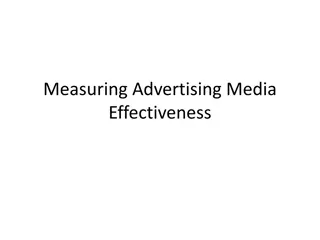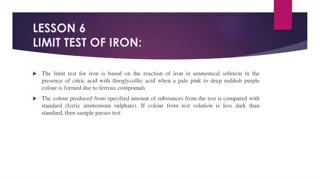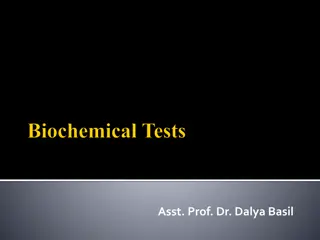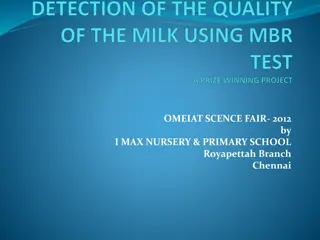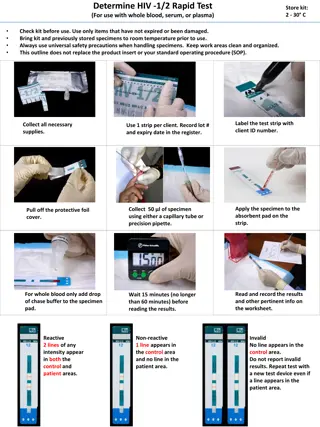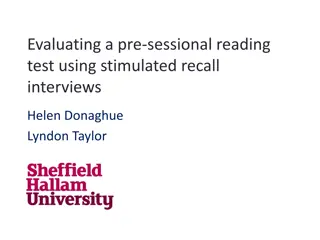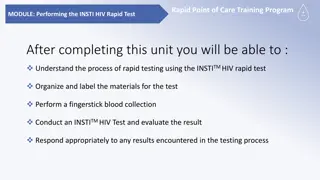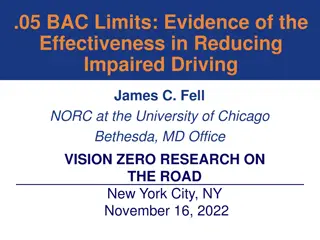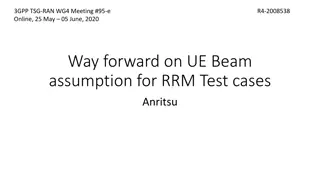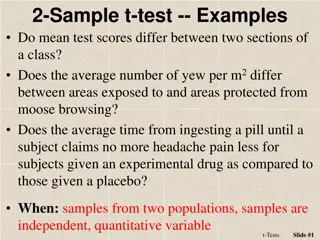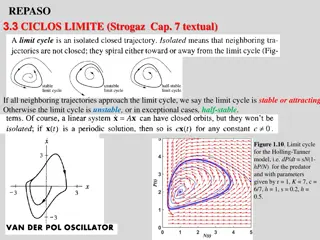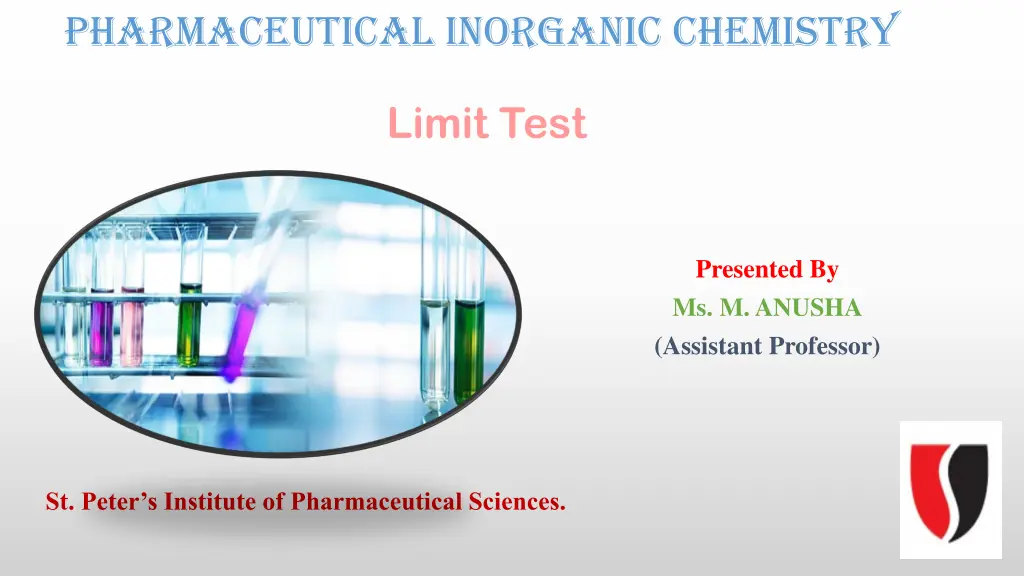
Limit Test for Iron in Pharmaceutical Inorganic Chemistry
Learn about the limit test for iron in pharmaceutical inorganic chemistry, a quantitative test designed to identify and control impurities in substances. The test is based on the reaction of iron with thioglycollic acid in an ammonical solution in the presence of citric acid. By following a specific procedure, the color developed in the sample solution is compared with a standard solution to determine the presence of iron impurities.
Download Presentation

Please find below an Image/Link to download the presentation.
The content on the website is provided AS IS for your information and personal use only. It may not be sold, licensed, or shared on other websites without obtaining consent from the author. If you encounter any issues during the download, it is possible that the publisher has removed the file from their server.
You are allowed to download the files provided on this website for personal or commercial use, subject to the condition that they are used lawfully. All files are the property of their respective owners.
The content on the website is provided AS IS for your information and personal use only. It may not be sold, licensed, or shared on other websites without obtaining consent from the author.
E N D
Presentation Transcript
Pharmaceutical Inorganic chemistry Limit Test Presented By Ms. M. ANUSHA (Assistant Professor) St. Peter s Institute of Pharmaceutical Sciences.
Limit tests:- Definition: Limit tests are quantitative or semi quantitative test designed to identify and control small quantities of impurities which are likely to be present in the substances. Tests being used to identify the impurity. Tests being used to control the impurity.
Limit test for IRON Limit test for IRON: : Limit test of Iron is based on the reaction of iron in ammonical solution with thioglycollic acid in presence of citric acid to form iron thioglycolate (Ferrous thioglycolate complex) which produces pale pink to deep reddish purple color in alkaline media. Thioglycolic acid is used as reducing agent.
The color of the Ferrous thioglycolate complex fades in the presence of air due to oxidation. Also, the color is destroyed in presence of oxidizing agents and strong alkalis. The purple color is developed only in alkaline media. So ammonia solution is used. But ammonia reacts with iron, forms precipitate of ferrous hydroxide. Thus citric acid is used which prevents the precipitate of iron with Ammonia by forming a complex with iron as iron citrate.
Procedure: Test sample Standard compound 2 ml of standard solution of iron diluted (0.173 with water upto 40 ml (0.173gm ferric ammonium sulphate +1.5 ml HCl Volume make upto 1000ml with distelled water) Add 2 ml of 20 % w/v of citric acid (iron free) Sample is dissolved in specific amount of water and then volume is made up to 40 ml Add 2 ml of 20 % w/v of citric acid (iron free) Add 2 drops of thioglycollic acid Add 2 drops of thioglycollic acid Add ammonia to make the solution alkaline and adjust the volume upto 50 ml with distilled water. Keep aside for 5 min Add ammonia to make the solution alkaline and adjust the volume upto 50 ml with distilled water. Keep aside for 5 min Color developed is viewed vertically and compared with standard solution Color developed is viewed vertically and compared with standard solution Note: All the reagents used in the limit test for Iron should themselves be iron free.
Observation: The purple color produce in sample solution should not be greater than standard solution. If purple color produces in sample solution is less than the standard solution, the sample will pass the limit test of iron and vice versa. Reasons: Citric acid forms complex with metal cation and helps precipitation of iron by ammonia by forming a complex with it. Thioglycolic acid helps to oxidize iron (II) to iron (III). Ammonia is added to make solution alkaline. The pale pink color is visible only in the alkaline media. The color is not visible in acidic media as ferrous thioglycolate complex decomposes in high acidic media.

